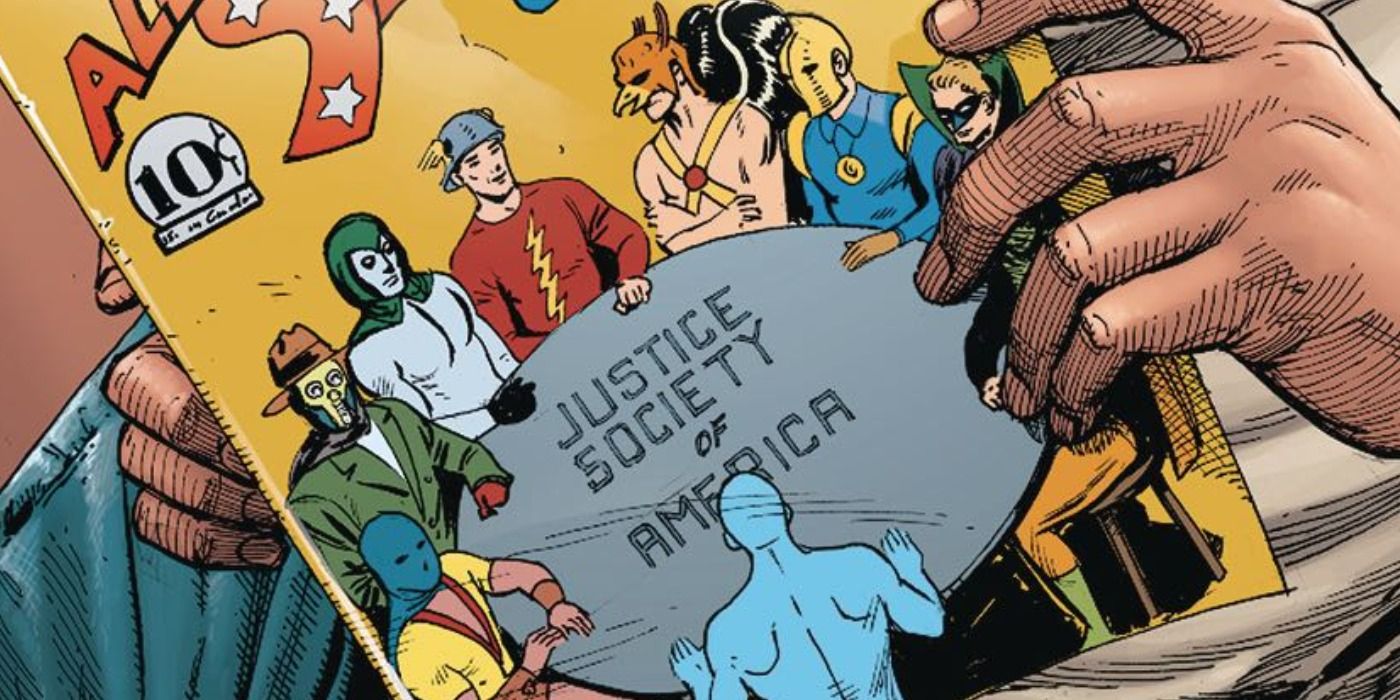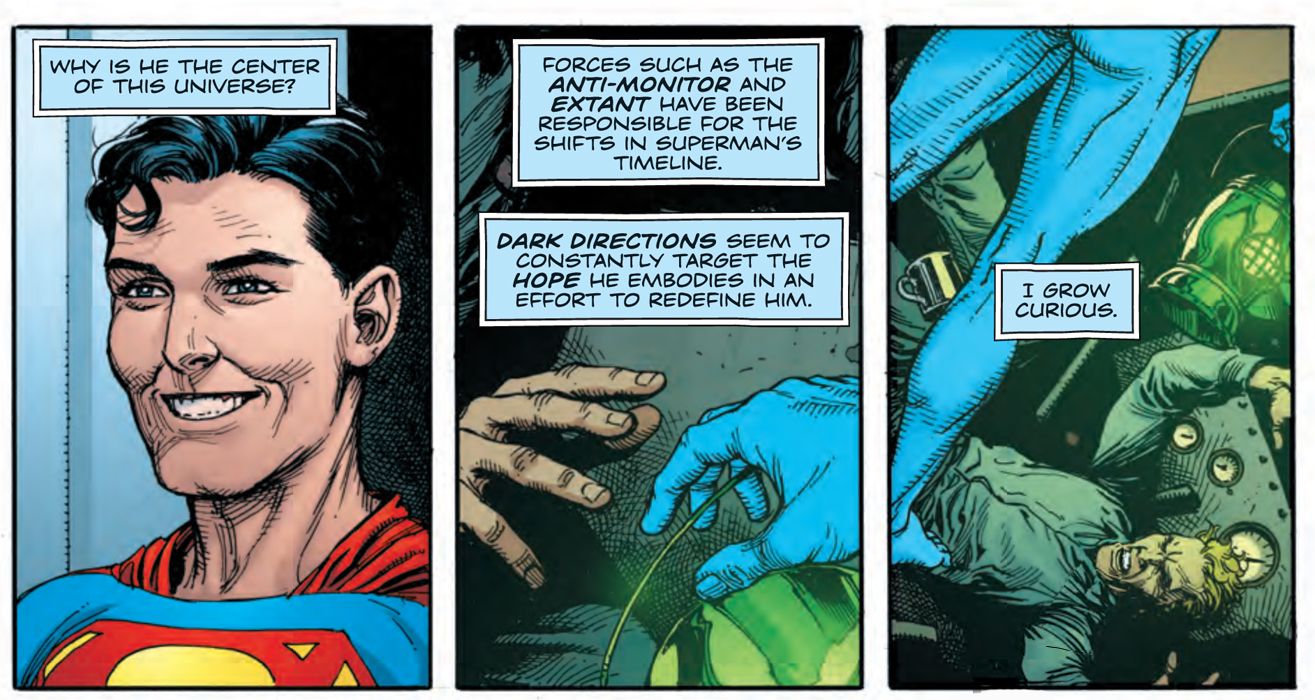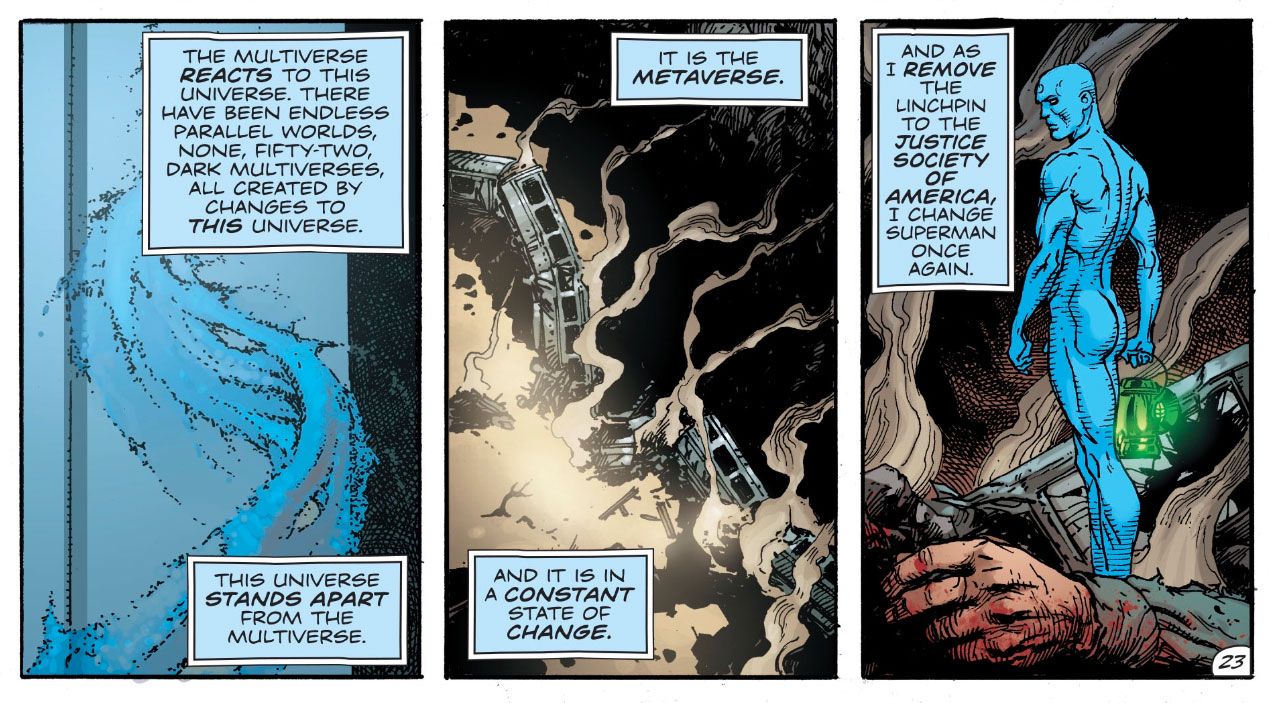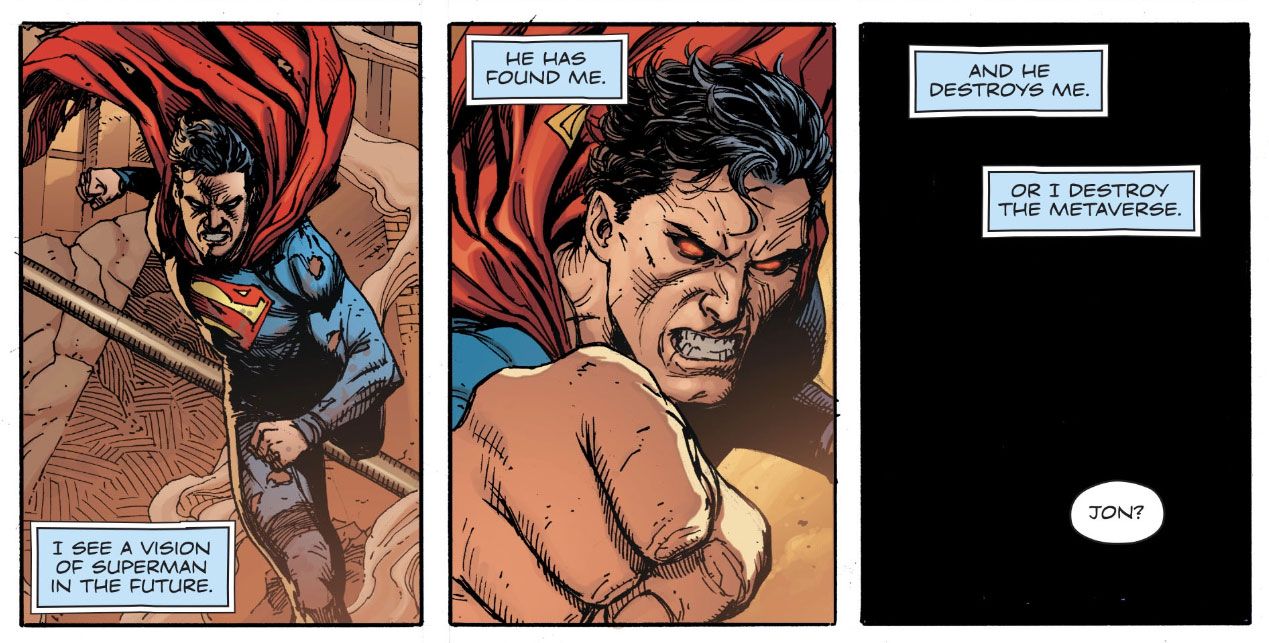WARNING: The following article contains major spoilers for Doomsday Clock #10 by Geoff Johns and Gary Frank, on sale now.
Doomsday Clock revealed that the "New 52" reality came into being when Doctor Manhattan altered the history of the Justice Society of America. Altering it, that is, by preventing the DC Universe's first superhero team from ever coming into existence. In Geoff Johns and Gary Frank's Doomsday Clock #10, Manhattan reveals exactly why he manipulated events this way – and it centers around one very important hero.
How Doctor Manhattan Messed With the JSA
As shown in Doomsday Clock #7, Manhattan started by meddling with the history of Alan Scott, who became the first Green Lantern in previous continuity. In the fateful train accident that led to his transformation, Manhattan moved the magic lantern out of Scott's reach. Instead of grabbing ahold of the lantern and gaining his powers during the mayhem, Scott simply died in the crash. In current continuity, the DC Universe never saw a Green Lantern until Hal Jordan took up the role.
As Scott was one of the founding members of the original Justice Society, the JSA therefore never formed in the current reality. But what of the JSA's other members, such as The Flash and Hawkman? Did they meet similar fates at the hand of Manhattan's whims? Or was Alan Scott simply the driving force behind the JSA's creation, and no one else ever thought to assemble such a team?
The fates of The Flash (Jay Garrick) and Hawkman (Carter Hall), as examples, have not been specifically referenced in Doomsday Clock. Any references to these characters come in the form of older continuities. For example. Lois Lane found a flash drive with video of the JSA, and Manhattan references the team in relation to past continuity, which he's undone. The lack of any true history for these characters in current continuity indicates that they simply don't exist. But whether Garrick and Hall simply never adopted their alter egos – thanks to Manhattan – or whether something worse happened, also thanks to Manhattan, is unknown. Whatever happened – or didn't happen – with these characters points to the notion that Manhattan likely also meddled in their histories.
Why Doctor Manhattan Messed With the JSA
This applies to all the JSA's charter members – except for one. The elderly Johnny Thunder is shown to be alive in the present day, living in a nursing home and actively involved in the events of Doomsday Clock. He has memories of his Johnny Thunderbolt alter ego and the JSA, although no one else seems to remember.
Was Johnny Thunderbolt perhaps one of the JSA members who actually existed in the past in this reality? Probably not. It's more likely the pre-New 52 reality asserting itself, as postulated by Manhattan in this issue. If nothing else, Thunder's presence shows that Manhattan isn't totally heartless. Whatever he did to Alan Scott, and potentially the other JSA founders, at least he let Johnny Thunder lead an otherwise happy life.
Whether his manipulations proved fatal to the rest of the Justice Society's founders or not, one thing is clear: Doctor Manhattan did not want the JSA to exist. But why?
Initially, it seemed Manhattan had a grudge against superheroes, and specifically the JSA, as witnessed by the apparent destruction of his world, and the conflict among superpowered factions seen on this one. But no – his erasing the JSA from continuity isn't rooted in any kind of hatred. Instead, it's driven by something that seems far more trivial and inconsequential: his curiosity. Specifically, his curiosity centered around this world's most influential hero: Superman.
When is Superman Going to Mess with Doctor Manhattan?
Manhattan observed that, for all the past reality changes brought about by powerful entities before him, Superman's presence and inspiration has always been a constant – at least until now. Manhattan's machinations have eliminated the JSA, and ultimately ushered in an incarnation of Superman seen, for the first time, as more detached from humanity. This version of the Man of Steel is one that Manhattan finds more relatable, but less symbolic of the hope the hero has historically stood for in past realities.
Reality, however, doesn't seem to like the change to Superman, and as Manhattan explains, this newly-coined "metaverse" is pushing back. And, who could blame it? Doctor Manhattan, proclaimed as a god by others and certainly fulfilling a creationist kind of role, is playing with a reality like it's a toy – all because of his interest in one man.
Past continuity-altering events have at least been tied to some kind altruism, in contrast to Manhattan's comparative selfishness. The conflict against the Anti-Monitor in Crisis on Infinite Earths might have mashed several surviving realities into one, but at least they were saved in some form. Hal Jordan, as Parallax, at least had good intent when he tried to reset DC history in Zero Hour: Crisis in Time. But the morally oblivious Manhattan has no such intent. Instead, he's like a kid with unlimited power in his hands, wantonly flipping dials and switches, just to see who lives and dies when he does.
At the end of the issue, Manhattan labels himself "a being of inaction," in reference to his pending conflict Superman, who's appropriately deemed "a man of action." However, Manhattan is anything but a being of inaction. His acts have unilaterally and nonconsensually impacted entire universes. And as he further adds, "To this universe of hope, I have become the villain."
And, he most certainly has, for the countless lives and worlds he's impacted purely out of selfishness is truly villainous. If nothing else, the JSA needs to return – to help Superman put him in his place.




